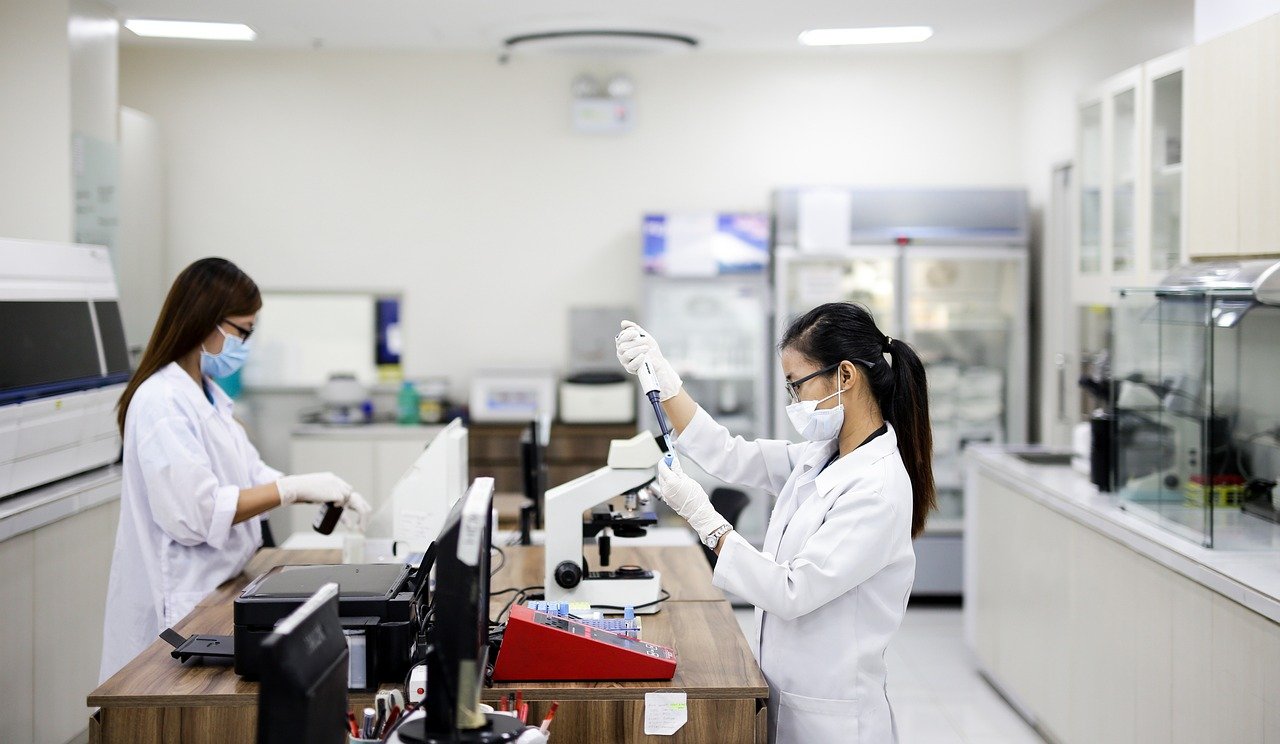Cold Storage Box Design and Vaccine Equity: Enhancing Access in Low-Resource Settings
This article explores how innovations in cold storage box design can improve vaccine equity by ensuring that even the most remote and low-resource settings can store, transport, and administer vaccines effectively.

Vaccination is one of the most effective public health interventions, saving millions of lives each year. However, the global distribution of vaccines is still uneven, with access challenges disproportionately affecting low-resource settings. Vaccine equity, the principle that all individuals should have equal access to life-saving vaccines, regardless of their geographical location or socioeconomic status, remains an ongoing challenge, especially in remote or underdeveloped regions. One key factor in overcoming this challenge is the design and functionality of cold storage boxes, which are critical to maintaining vaccine efficacy during transportation and storage.
This article explores how innovations in cold storage box design can improve vaccine equity by ensuring that even the most remote and low-resource settings can store, transport, and administer vaccines effectively. It also addresses how improvements in cold chain logistics, along with technologies like the scientific freezer, can contribute to a more equitable global vaccine distribution network.
The Importance of Cold Chain Logistics for Vaccines
Vaccines are sensitive biological products that must be stored within specific temperature ranges to remain effective. Most vaccines require refrigeration between 2°C and 8°C, while others, such as certain COVID-19 vaccines, require ultra-cold storage at temperatures as low as -70°C. When vaccines are exposed to temperatures outside their recommended range, they can lose potency, rendering them ineffective. This makes cold chain logistics—systems that ensure vaccines are kept at the correct temperature throughout transport and storage—an essential aspect of global immunization efforts.
In low-resource settings, maintaining an unbroken cold chain is particularly challenging. Limited infrastructure, unreliable electricity, and long transportation distances can all contribute to temperature excursions that compromise vaccine efficacy. This is where innovative cold storage box designs can make a significant difference.
The Role of Cold Storage Box Design in Vaccine Equity
To ensure that vaccines reach populations in low-resource settings, cold storage boxes must be designed with several key factors in mind: durability, temperature stability, portability, and affordability. The success of any vaccine distribution effort depends on the ability of cold storage boxes to overcome the logistical challenges present in these regions. Below, we explore how modern cold storage box designs are addressing these needs and enhancing vaccine equity.
1. Temperature Stability
Temperature stability is the most critical function of a cold storage box. Traditional cold storage boxes rely on ice packs or phase-change materials to maintain the necessary temperature range during transport. However, these solutions often have limitations in terms of how long they can maintain a stable temperature, especially in hot climates or during long transportation times.
Innovative cold storage boxes are now being designed with advanced insulation materials that can keep vaccines within the required temperature range for longer periods, even in extreme environments. Vacuum-insulated panels and reflective surfaces, for example, significantly reduce heat transfer, extending the cooling duration. Some boxes incorporate passive cooling technologies that use phase-change materials optimized for specific temperature ranges, providing more precise control over the internal environment.
For vaccines that require ultra-cold storage, such as mRNA COVID-19 vaccines, traditional cooling methods are not sufficient. This is where specialized scientific freezers come into play. These freezers can store vaccines at ultra-low temperatures, but their large size and energy requirements make them impractical for low-resource settings. However, portable ultra-cold storage boxes that can maintain temperatures below -70°C for extended periods are now being developed, making it possible to transport and store ultra-cold vaccines in remote areas.
2. Energy Efficiency and Off-Grid Operation
In low-resource settings, unreliable or non-existent electricity supplies present a significant challenge for maintaining the cold chain. To address this, cold storage box designs are increasingly focused on energy efficiency and the ability to operate without a constant power supply.
Solar-powered cold storage boxes are one of the most promising innovations in this area. These boxes use solar panels to charge batteries that power cooling systems, allowing them to maintain a stable temperature even in off-grid locations. Additionally, energy-efficient designs that minimize power consumption—such as using high-efficiency compressors and advanced insulation materials—help extend the duration that cold storage boxes can operate without recharging.
Some cold storage boxes are equipped with built-in temperature monitoring systems that alert healthcare workers if the internal temperature deviates from the safe range. These systems can also be powered by solar energy, ensuring that vaccines remain safe even in areas with frequent power outages.
3. Portability
In many low-resource settings, healthcare workers must travel long distances over rough terrain to reach remote communities. Cold storage boxes must be lightweight and easy to transport to ensure that vaccines can be delivered to these hard-to-reach areas.
Modern cold storage box designs prioritize portability, using lightweight yet durable materials such as high-density polyethylene (HDPE) or carbon fiber composites. Some boxes are equipped with handles or straps that make them easier to carry by hand, while others are designed to be transported on motorcycles, bicycles, or small vehicles commonly used in rural areas.
Portability is especially important for mobile vaccination campaigns, where healthcare workers may need to carry vaccines on foot or by vehicle across difficult terrain. By reducing the weight and increasing the ease of transport of cold storage boxes, vaccine equity can be improved by reaching populations that were previously inaccessible.
4. Durability
Durability is another essential aspect of cold storage box design, particularly in low-resource settings where rough handling, extreme weather, and long transportation distances are common. Cold storage boxes must be able to withstand physical impacts, exposure to heat and moisture, and frequent opening and closing without compromising their ability to maintain temperature.
Innovative designs incorporate shock-resistant materials and reinforced structures that protect the contents from physical damage during transport. Waterproof seals and corrosion-resistant coatings ensure that the boxes remain functional even in harsh weather conditions. By improving durability, these boxes can be used repeatedly, reducing the overall cost of vaccine distribution and making them more accessible to low-resource settings.
5. Affordability
Affordability is a critical factor in improving vaccine equity. In low-resource settings, healthcare budgets are often limited, and expensive cold chain equipment may be out of reach. Cold storage boxes designed for these regions must be cost-effective without sacrificing functionality.
Innovations in materials science and manufacturing processes are helping to lower the cost of cold storage boxes. For example, mass production of high-performance insulation materials and cooling technologies has made it possible to produce more affordable cold storage solutions. Additionally, the use of locally sourced materials and simpler, modular designs can further reduce costs, making these boxes more accessible to low-income countries and remote healthcare providers.
Enhancing Vaccine Equity through Improved Cold Chain Infrastructure
While cold storage box for vaccines plays a vital role in enhancing vaccine equity, it is only one part of a broader cold chain infrastructure that needs improvement. Investments in transportation, storage facilities, and monitoring systems are also necessary to ensure that vaccines reach every corner of the globe safely and efficiently.
Innovations such as portable scientific freezers, solar-powered refrigerators, and real-time temperature monitoring systems can help strengthen cold chain infrastructure in low-resource settings. Additionally, training healthcare workers to properly handle and maintain cold storage equipment is crucial to preventing vaccine spoilage and ensuring that immunization campaigns are successful.
Case Study: The Role of Cold Storage Boxes in COVID-19 Vaccine Distribution
The COVID-19 pandemic highlighted the importance of cold chain logistics in global vaccine distribution. Many COVID-19 vaccines, particularly the mRNA-based vaccines from Pfizer-BioNTech and Moderna, require ultra-cold storage at temperatures as low as -70°C. This posed a significant challenge for low-resource settings that lacked the necessary cold chain infrastructure.
In response, several organizations developed portable ultra-cold storage boxes capable of maintaining the required temperatures for extended periods. These boxes were crucial in ensuring that COVID-19 vaccines could be delivered to remote and underserved populations, contributing to more equitable access to life-saving vaccines.
One example is the collaboration between Pfizer and the Clinton Health Access Initiative (CHAI) to deploy specialized cold storage boxes in African countries. These boxes, combined with solar-powered refrigeration units, enabled the safe storage and distribution of mRNA vaccines in regions with limited electricity access.
Conclusion
Cold storage box design plays a pivotal role in improving vaccine equity by ensuring that vaccines can be safely transported and stored in low-resource settings. Innovations in temperature stability, energy efficiency, portability, durability, and affordability are helping to overcome the logistical challenges that have historically limited vaccine access in remote and underserved areas.
As global healthcare systems continue to focus on vaccine equity, investments in cold chain infrastructure—including advanced scientific freezers and cold storage boxes—will be essential. By prioritizing sustainable, cost-effective, and innovative solutions, we can ensure that everyone, regardless of their location or socioeconomic status, has access to life-saving vaccines.
What's Your Reaction?





















